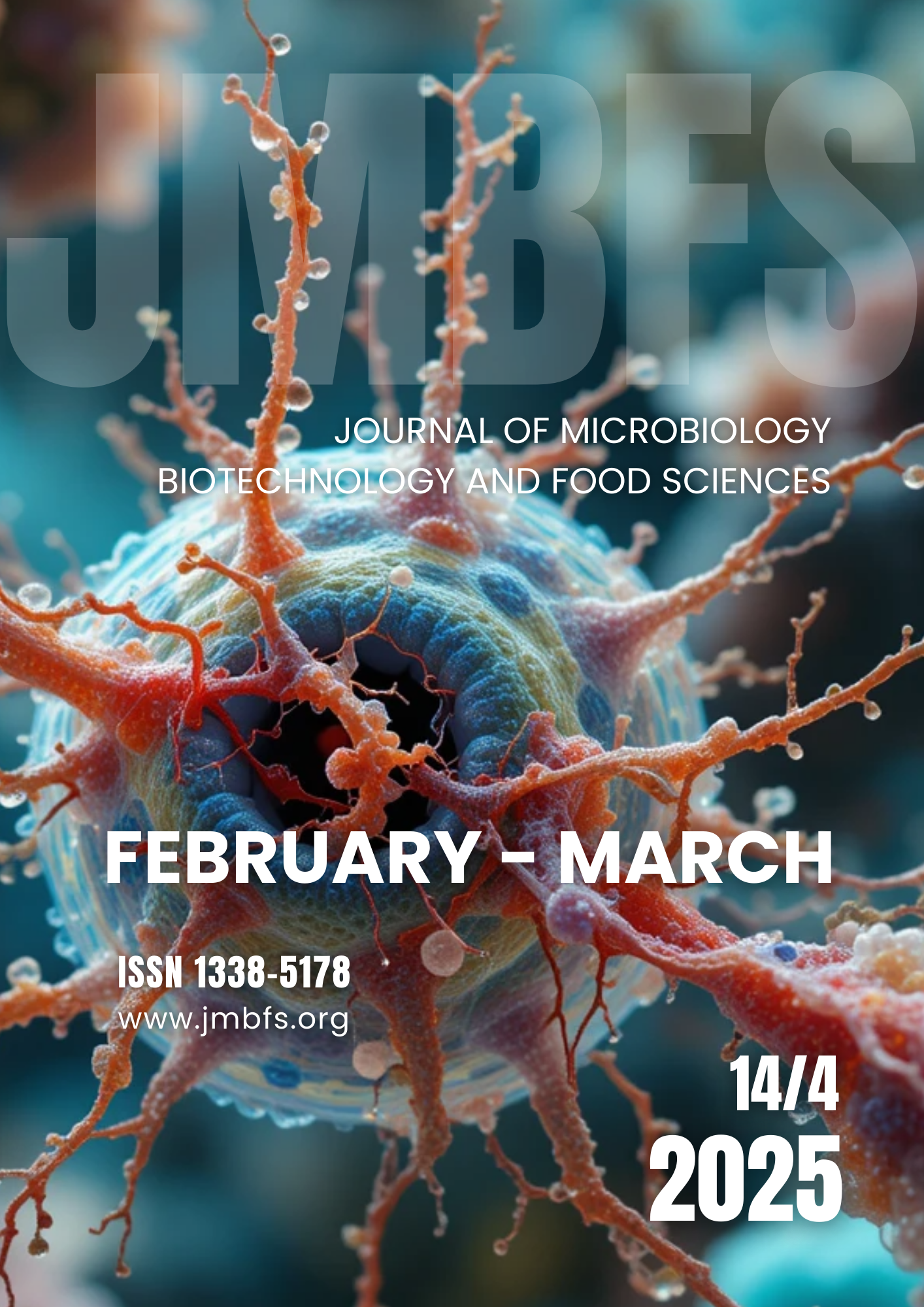ENHANCING LACCASE ENZYME PRODUCTION BY CO-CULTURE OF ENDOPHYTIC FUNGI WITH POTENTIAL APPLICATION IN BIOREMEDIATION OF DYES
DOI:
https://doi.org/10.55251/jmbfs.5542Keywords:
Laccase enzyme, Co-culture, Alternaria spp, Applications, Decolorization, DyesAbstract
In the search for safe and economical methods for laccase enzyme production with high levels, the co-cultivation of two endophytic fungi Alternaria tenuissima MG975633 and Alternaria arborescens MK629314 was examined. In-vitro antagonistic characteristics indicated the ability of both Alternaria spp. to grow together without affecting each other. Maximum laccase production obtained from the co-culture fermentation reached 49.5 U.ml-1 using rice bran medium under shaking conditions, that increased about 2.44-fold than the synthetic medium (20.31 U.ml-1), and increased 1.50 & 1.21-folds compared to Alternaria tenuissima MG975633 and Alternaria arborescens MK629314 monocultures, respectively after incubation for 12 days. The fungal isolates exhibited degradative and decolourization potential against the different dyes tested at varying degree. On solid medium the highest decolorization zones were obtained by A. arborescens MK629314 for Trepan blue (90 mm), followed by Brilliant green (85 mm), Rimazol brilliant blue R and Methyl red (80mm). Application of the crude laccase enzyme exhibited the highest decolorization rate in Rimazol brilliant blue R (15.57%) and Trepan blue (13.71%), followed by Methyl red (11.12) and Congo red (8.83%). The potential performance of A. tenuissima MG975633 and A. arborescens MK629314 in improving laccase production and biodegradation of different textile dyes encourage the use of laccase based production for environmental decontamination in future.
Downloads
Downloads
Published
How to Cite
Issue
Section
License
Copyright (c) 2022 Abeer Abd El Aty

This work is licensed under a Creative Commons Attribution 4.0 International License.
All papers published in the Journal of Microbiology, Biotechnology and Food Sciences are published under a CC-BY licence (CC-BY 4.0). Published materials can be shared (copy and redistribute the material in any medium or format) and adapted (remix, transform, and build upon the material for any purpose, even commercially) with specifying the author(s).





